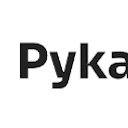Roboflow AI Vision Toolkit

What is roboflow.com?
Roboflow.com is a dedicated website catering to the needs of developers seeking to create and deploy computer vision applications. With a diverse set of capabilities, it enables users to efficiently generate datasets, train models, and seamlessly deploy them in production environments. The platform offers access to models from renowned sources like OpenAI and Meta AI, along with a vast repository of open-source alternatives, granting developers the flexibility to choose the most fitting model for their projects. Furthermore, Roboflow.com boasts a user-friendly approach to integration, offering open APIs, SDKs, comprehensive developer tools, and well-documented resources, ensuring a smooth integration process into any software pipeline. Additionally, the platform provides access to an array of free public computer vision datasets in various popular formats, simplifying the training and testing of models. For those curious about the company's mission and vision, Roboflow.com also provides insights into its overarching goals. In essence, Roboflow.com serves as a robust platform that empowers developers to imbue their software with the ability to recognize objects in images and videos, streamlining the development and deployment of computer vision applications.
How much does roboflow.com cost?
Roboflow offers a range of pricing plans tailored to meet varying needs. These plans, as detailed on their website, include the Public, Starter, and Enterprise options.
- Public Plan: This plan is available free of charge and comes with certain limitations. Users on the Public plan have access to public datasets and can accommodate up to 3 users. They are allocated 3 training credits and have a monthly cap of 1,000 inference credits.
- Starter Plan: Priced at $249 per month, the Starter plan offers a more comprehensive set of features. Subscribers to this plan enjoy benefits such as the ability to work with private datasets, an increased allotment of 10 training credits, and a monthly limit of 10,000 inference credits. Additionally, it includes premium augmentations and a health check feature.
- Enterprise Plan: The Enterprise plan is a custom offering that necessitates reaching out to the Roboflow sales team for a personalized quote. Building upon the Starter plan, it encompasses advanced features such as annotation review, intelligent active learning, the option for custom usage limits, single sign-on (SSO) capability, offline mode, access to a dedicated support engineer, and tailored contracting options.
In summary, Roboflow's pricing plans cater to a range of user requirements, with options spanning from a free Public plan with limitations to the more feature-rich Starter plan, and finally, the highly customizable Enterprise plan, which offers advanced functionalities and tailored support.
What are the benefits of roboflow.com?
Roboflow.com offers a host of compelling advantages for users:
- Effortless Data Management: With a user-friendly interface and accessible APIs, Roboflow simplifies the management, annotation, augmentation, and versioning of visual data, streamlining the data preparation process.
- Access to Foundation Models: The platform provides access to foundational models from esteemed sources such as OpenAI and Meta AI. Users have the flexibility to fine-tune these models with their own data, tailoring them to specific project requirements.
- Seamless Model Training and Deployment: Roboflow supports model training and deployment through both hosted and edge inference options. Furthermore, it offers SDKs and comprehensive documentation, facilitating easy integration of models into various applications.
- Collaboration and Support: Users can collaborate effectively with fellow developers and engineers within the Roboflow community. Additionally, they can seek assistance from the Roboflow team, ensuring a supportive and collaborative environment.
- Flexible Pricing: Roboflow.com offers a range of pricing plans to accommodate diverse needs and budgets. Users can choose from free public projects or opt for custom enterprise solutions, ensuring they find a plan that aligns with their specific requirements.
In summary, Roboflow.com presents a versatile platform that enhances the management of visual data, provides access to powerful models, simplifies model training and deployment, fosters collaboration and support, and offers flexible pricing options to cater to a wide spectrum of users.
How do I get started with Roboflow.com?
To commence your journey with Roboflow.com, you can initiate the process by following these straightforward steps:
- Account Creation: Begin by signing up for an account on Roboflow.com. You can easily create an account using your email address or by linking it to your GitHub account via their website.
- Project Initialization: Once your account is set up, proceed to create a new project within the platform. During this step, you'll be prompted to specify the type of computer vision task you intend to undertake. Options include object detection, image classification, or semantic segmentation, allowing you to tailor the project to your specific needs.
- Data Upload and Processing: After project creation, you can upload your images and corresponding annotations directly to Roboflow.com. Alternatively, you have the option to utilize one of their sample datasets. Roboflow.com also provides a suite of tools to assist in the annotation, data filtering, and data augmentation processes, simplifying the preparation of your visual data.
- Model Training: Roboflow.com offers two options for model training. You can either leverage their hosted service for training, streamlining the process, or export your data to your preferred framework for training, whether locally or on the cloud, providing flexibility to suit your preferences and infrastructure.
- Model Deployment: Once your model is trained and ready, Roboflow.com facilitates deployment to production through various inference options. These options include hosted API, compatibility with edge devices, or integration into web applications. Additionally, you can seamlessly integrate your model with other applications using Roboflow.com's software development kits (SDKs) and comprehensive documentation.
In essence, getting started with Roboflow.com involves a structured process, starting from account creation, project setup, data management, model training, and ultimately deploying your computer vision model with a choice of inference options and integration capabilities.
Can I use my own data on roboflow.com?
Certainly, Roboflow.com offers full support for utilizing your own data in the development and deployment of computer vision models. Here are the key points to keep in mind:
- Data Integration: Roboflow.com provides a comprehensive set of tools and services specifically designed to assist users in building and deploying computer vision models using their own images and annotations. This flexibility allows you to work with data that is most relevant to your specific project.
- Data Upload: You have the option to upload your data to Roboflow.com in a variety of formats, ensuring compatibility with your existing data structure. This simplifies the process of integrating your data into the platform.
- Annotation, Filtering, and Augmentation: Roboflow.com offers a suite of tools that facilitate essential tasks such as data annotation, filtering, and data augmentation. These tools enhance the quality and diversity of your dataset, a critical aspect of successful model training.
- Model Training and Deployment: You can choose to train and deploy your computer vision models using Roboflow.com's hosted service, which streamlines the process. Alternatively, the platform provides the option to export your data to your preferred framework, granting you the flexibility to train your models locally or on the cloud.
- Data Ownership: Importantly, Roboflow.com respects your data ownership. The platform does not claim ownership of your data, and you retain the authority to delete it from the platform at any time.
To gain a deeper understanding of how to effectively utilize your own data with Roboflow.com, you can refer to their website, blog, or help page for comprehensive guidance and resources. This ensures that you can leverage the platform's capabilities to the fullest extent for your unique computer vision projects.
What are the key features of Roboflow for computer vision applications?
Roboflow provides an all-encompassing suite of features tailored for building and deploying computer vision applications. The platform enables users to generate datasets, train models, and efficiently deploy them in production environments. Key features include collaborative labeling, a workflow builder for creating and understanding pipelines, and deployment options for cloud and edge environments. Roboflow integrates with various tools and supports a wide range of models, APIs, and external applications to enhance flexibility and efficiency in computer vision projects.
How does Roboflow support developers in deploying models?
Roboflow is designed with developers in mind, offering a straightforward model deployment process. It supports inference on both cloud and edge environments, making it suitable for diverse project requirements. Developers can utilize Roboflow Inference, an open-source, high-performance deployment solution, to start running models quickly. Integration with popular tools and platforms such as Azure, AWS, and Google Cloud further simplifies the deployment process, allowing developers to seamlessly incorporate existing infrastructure and tools.
Which industries benefit from using Roboflow for computer vision?
Roboflow is utilized by over 16,000 organizations across various industries, providing tailored solutions for specific sector needs. Notable industries that benefit from Roboflow's capabilities include security, banking, retail, automotive, aerospace and defense, government, oil and gas, agriculture, manufacturing, telecommunications, healthcare, and utilities. The platform's versatility and powerful tools enable these industries to accelerate their computer vision initiatives, enhancing efficiency, security, and innovation across different applications.





.webp)























